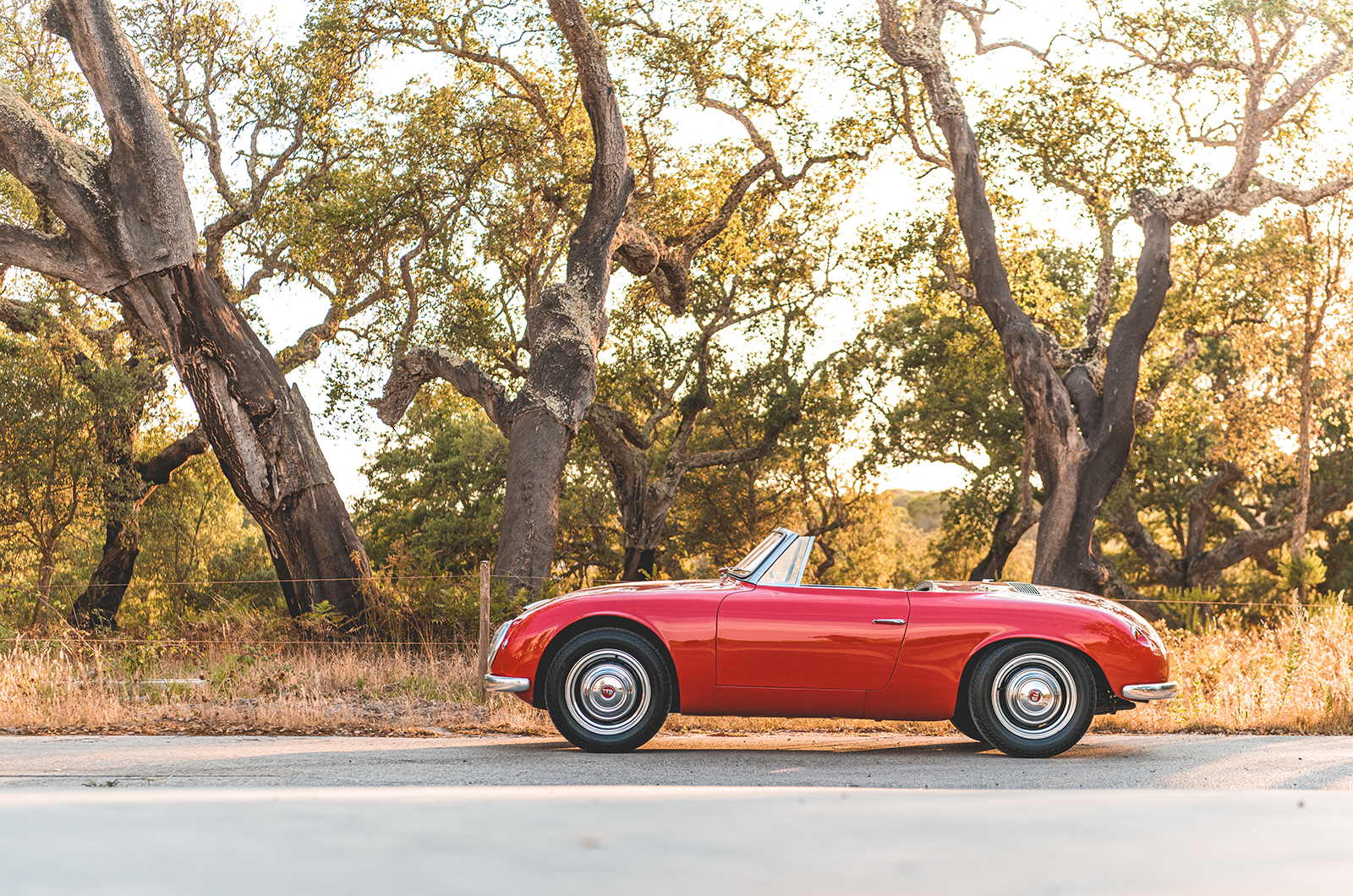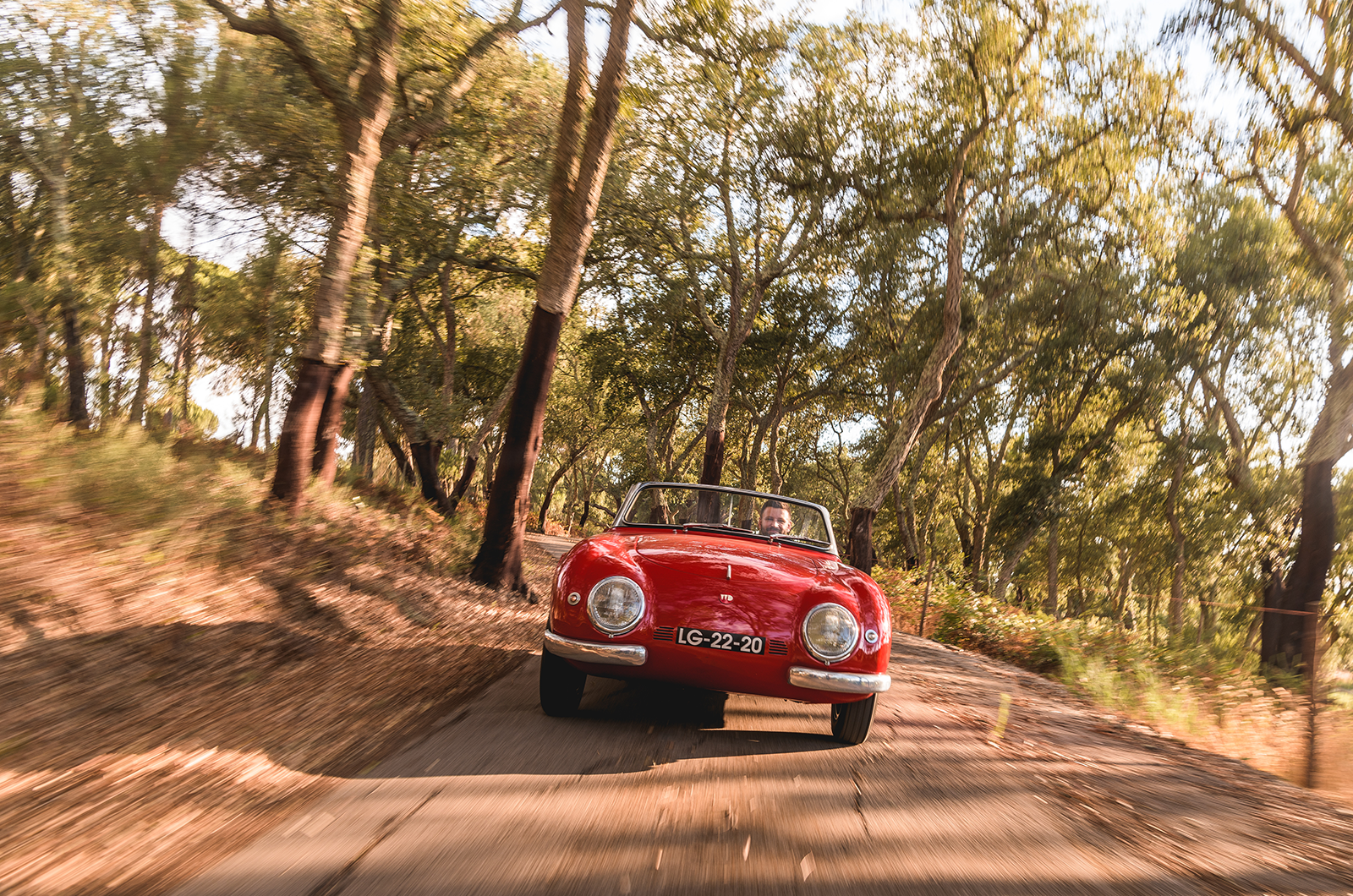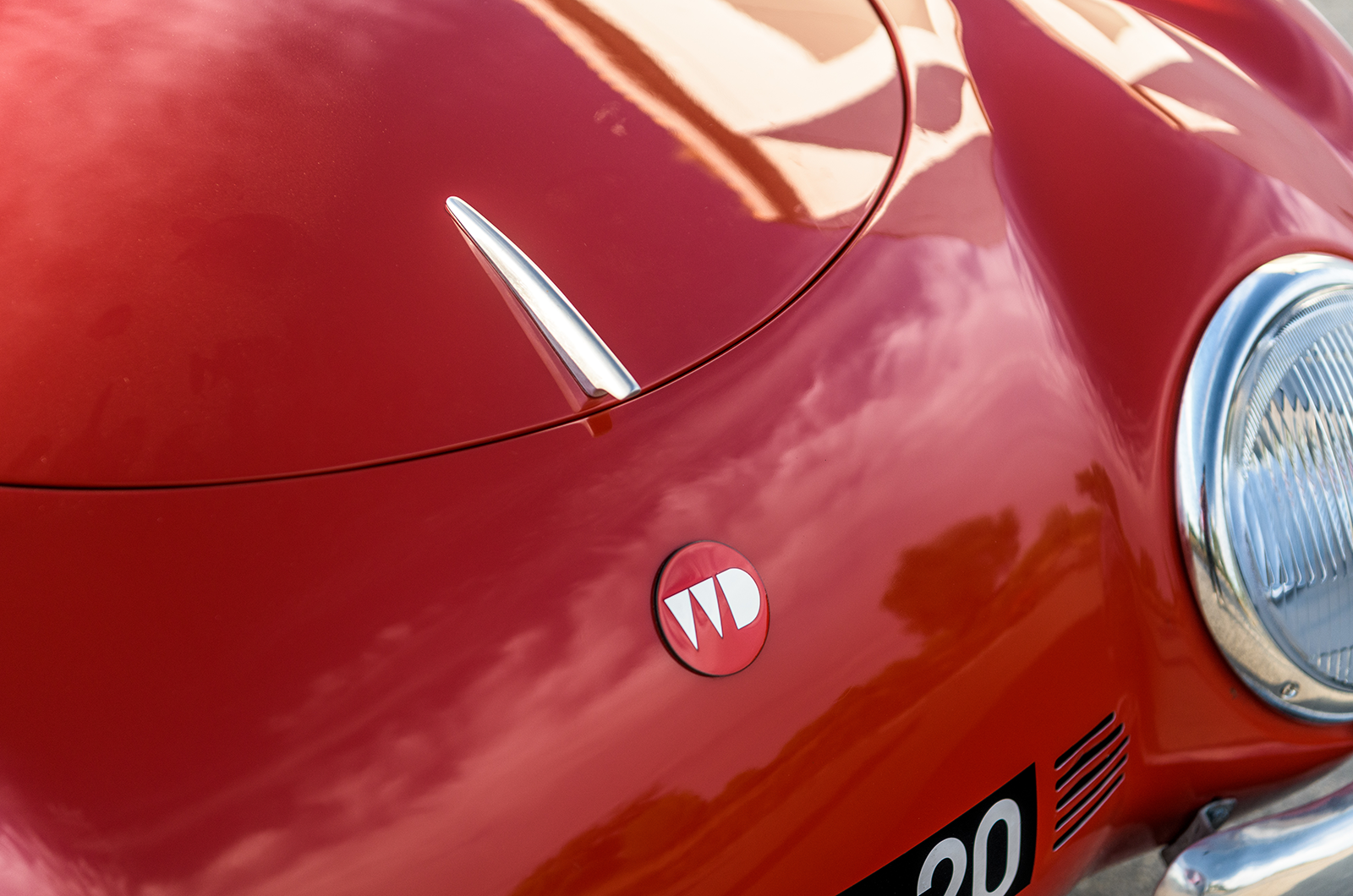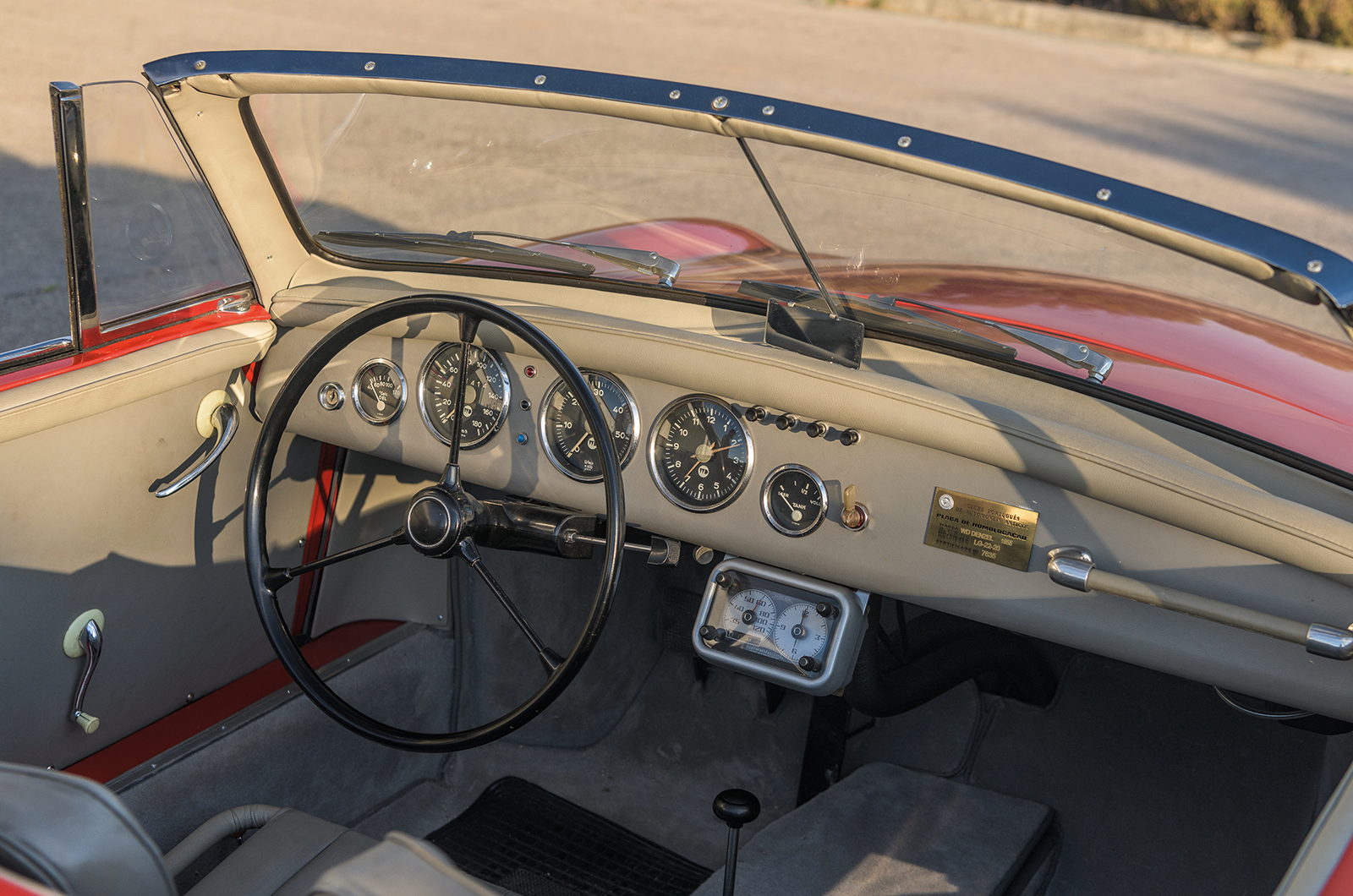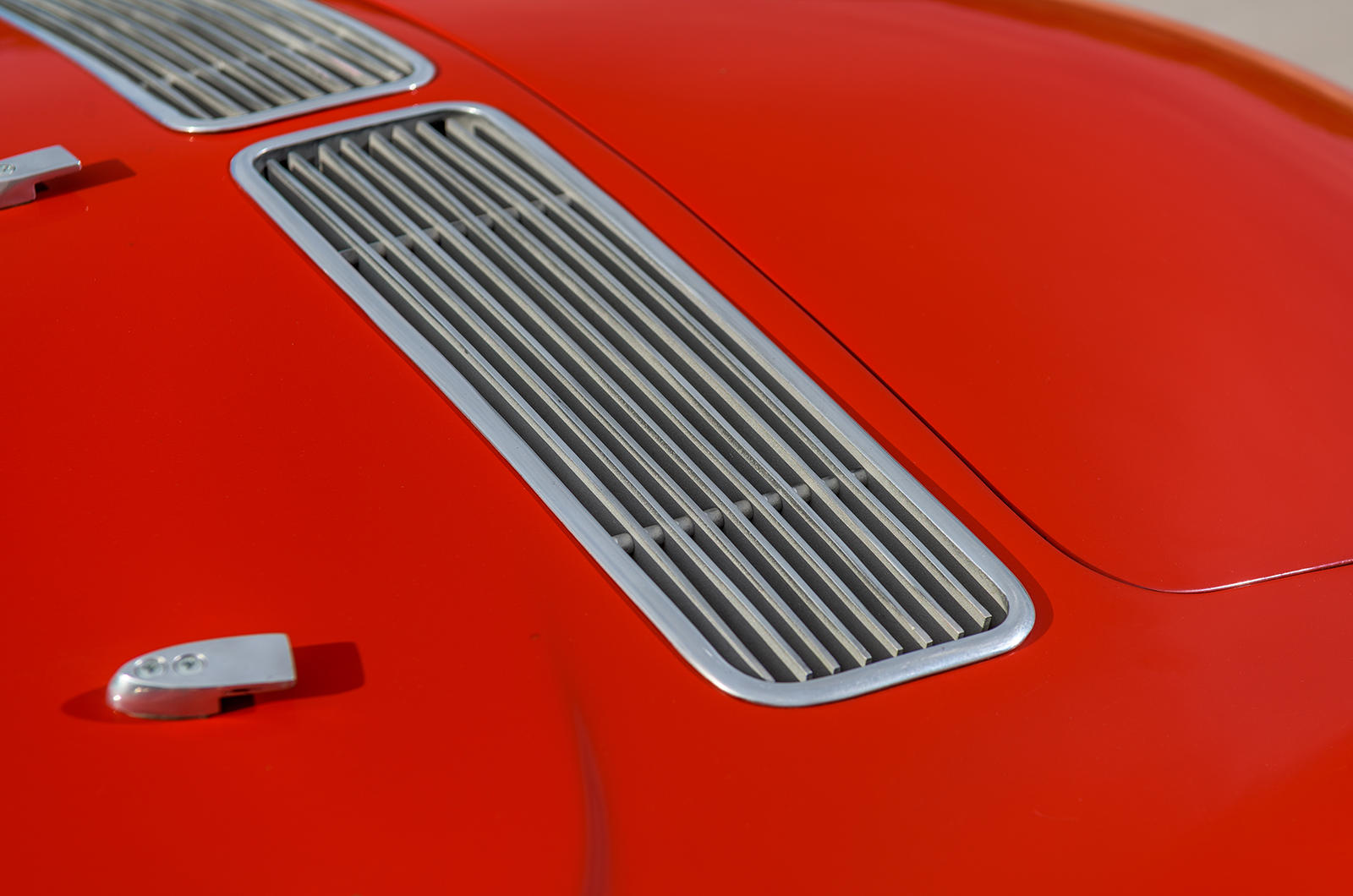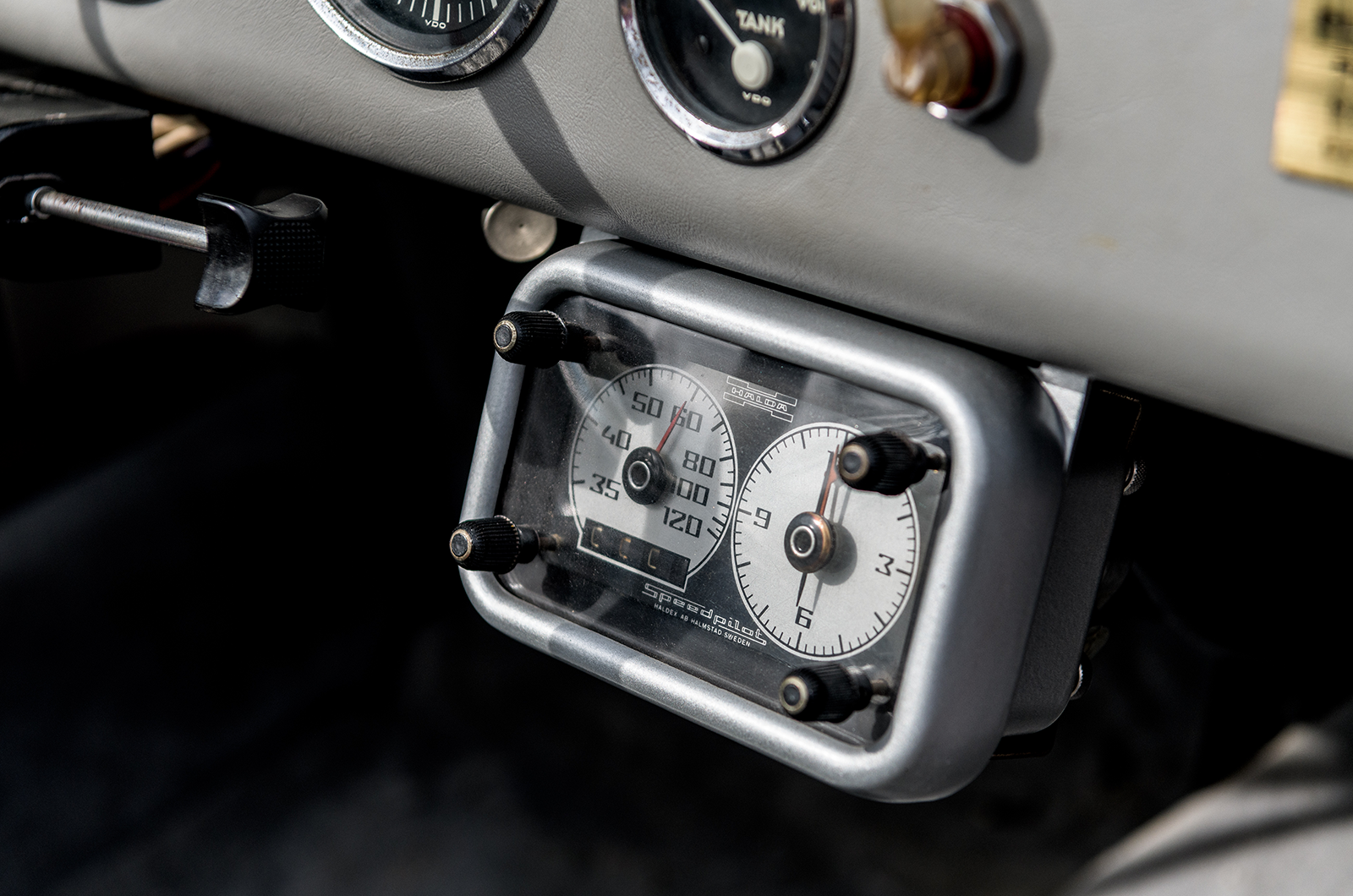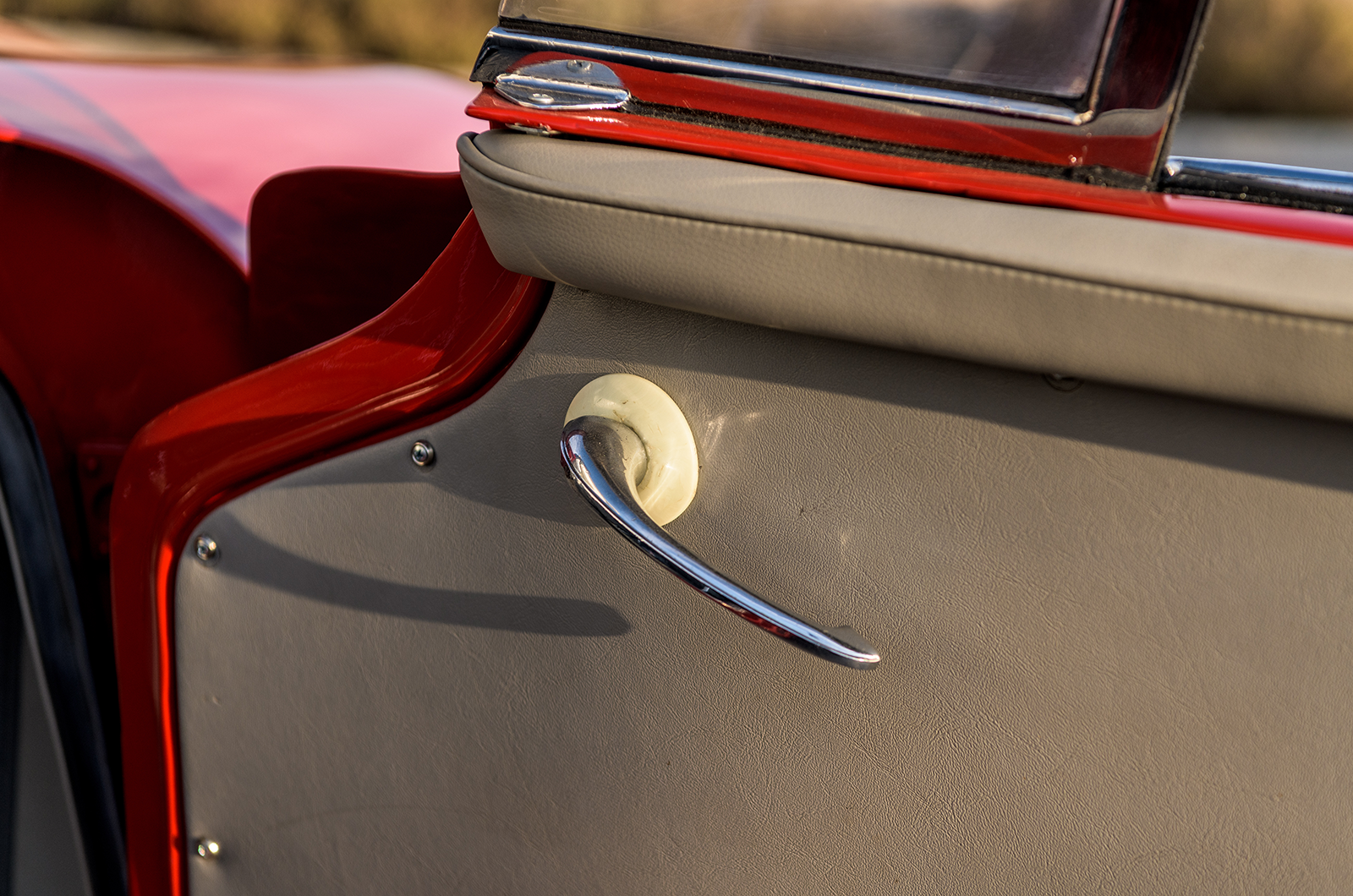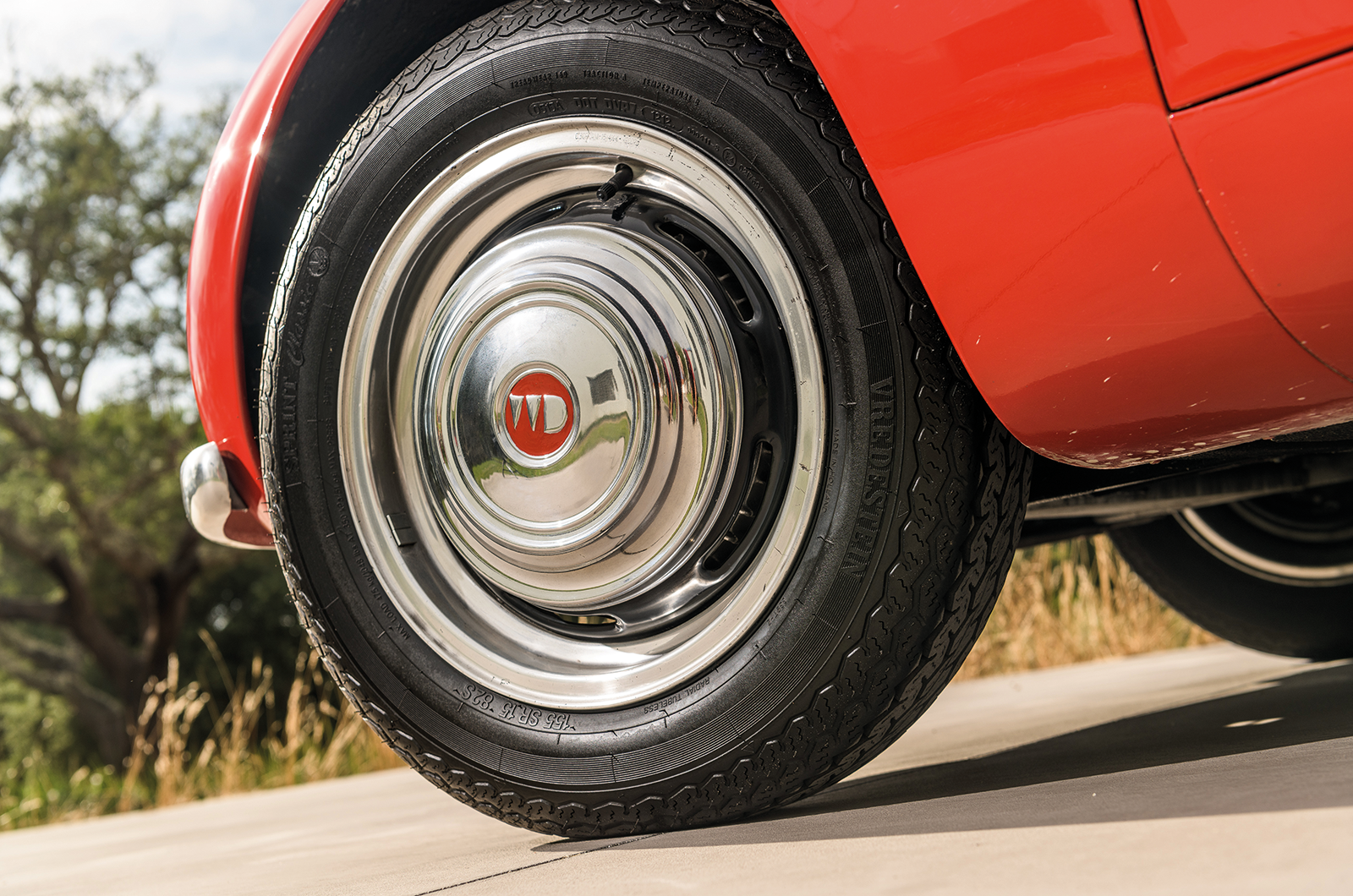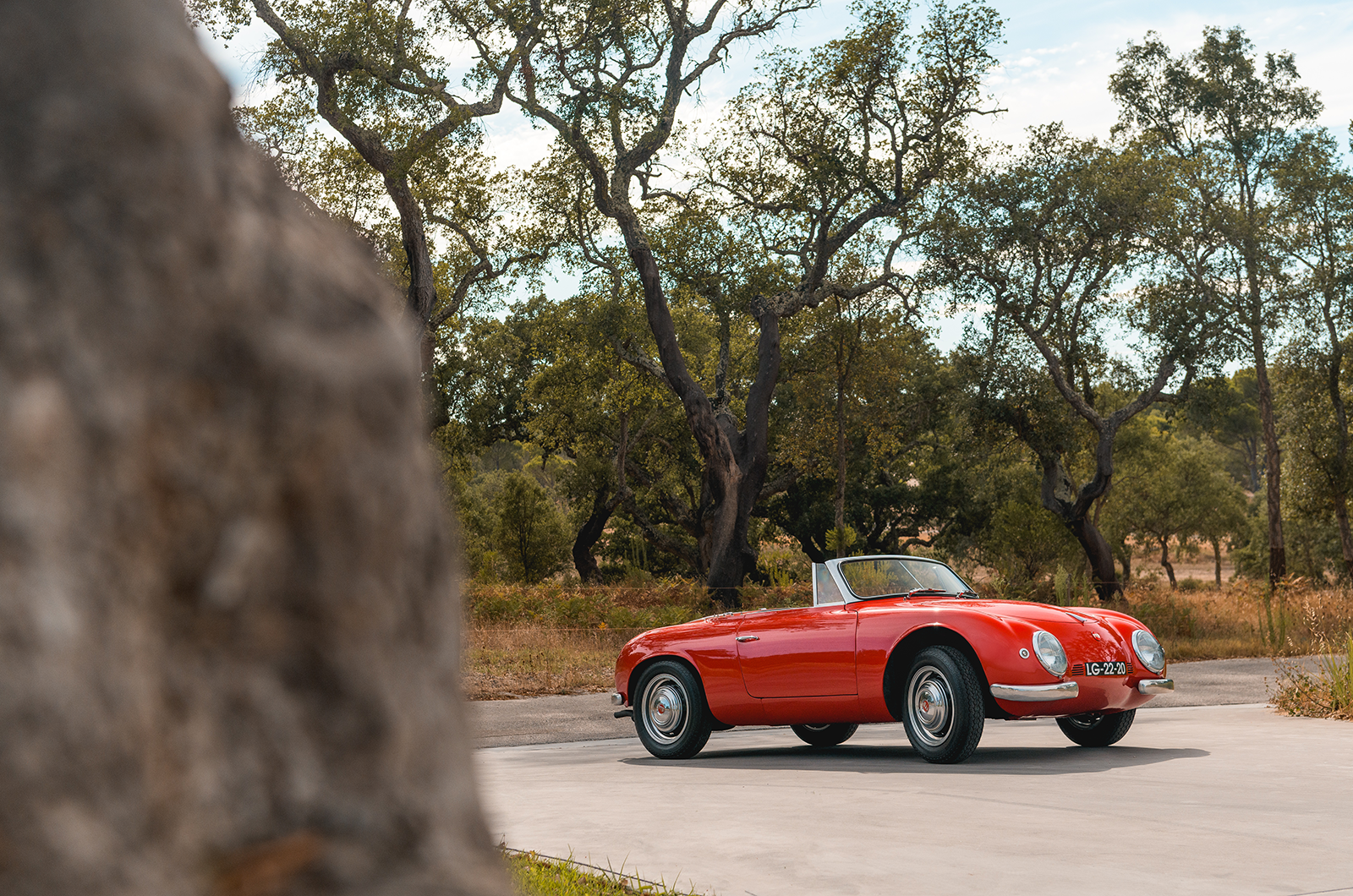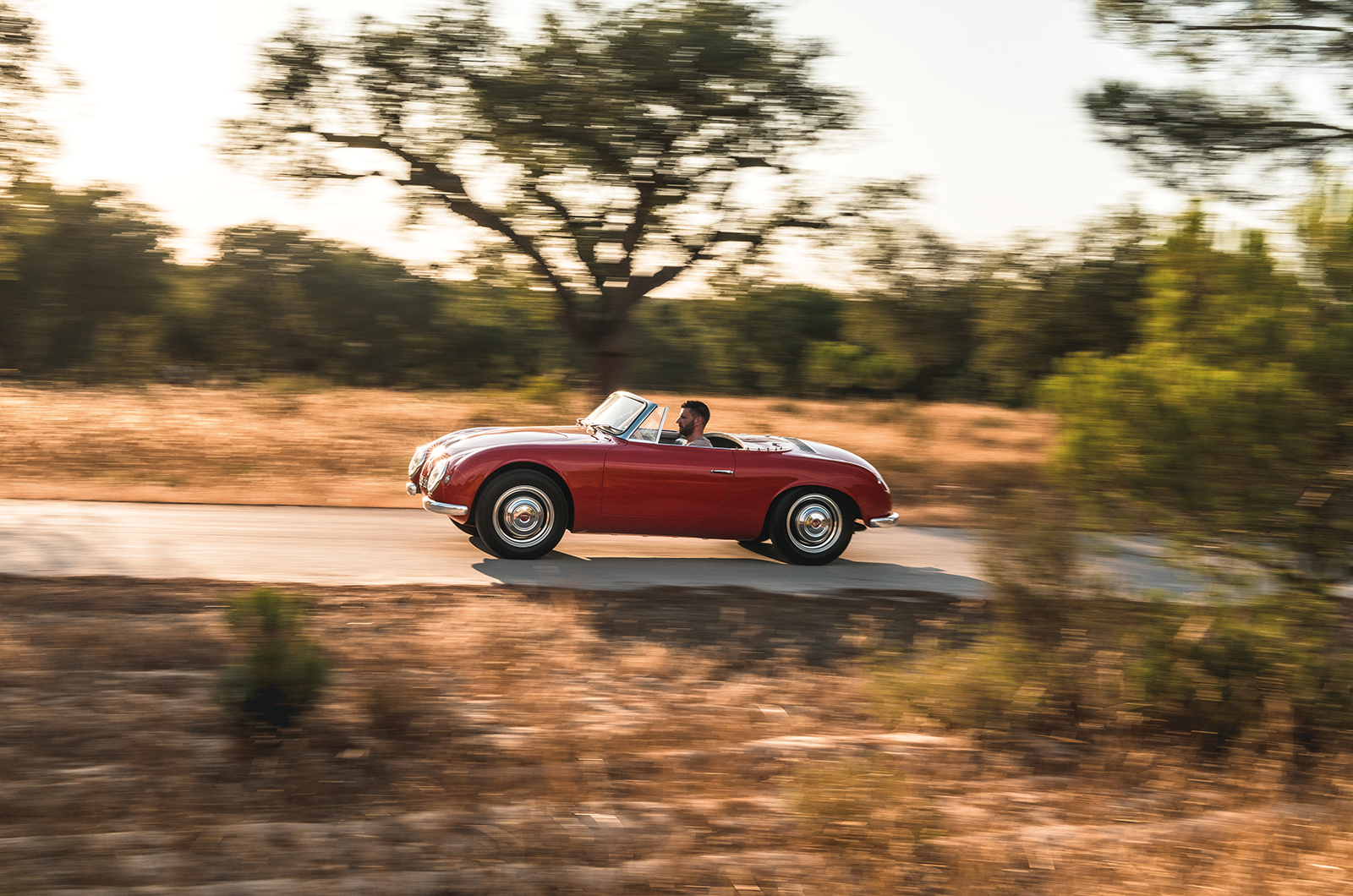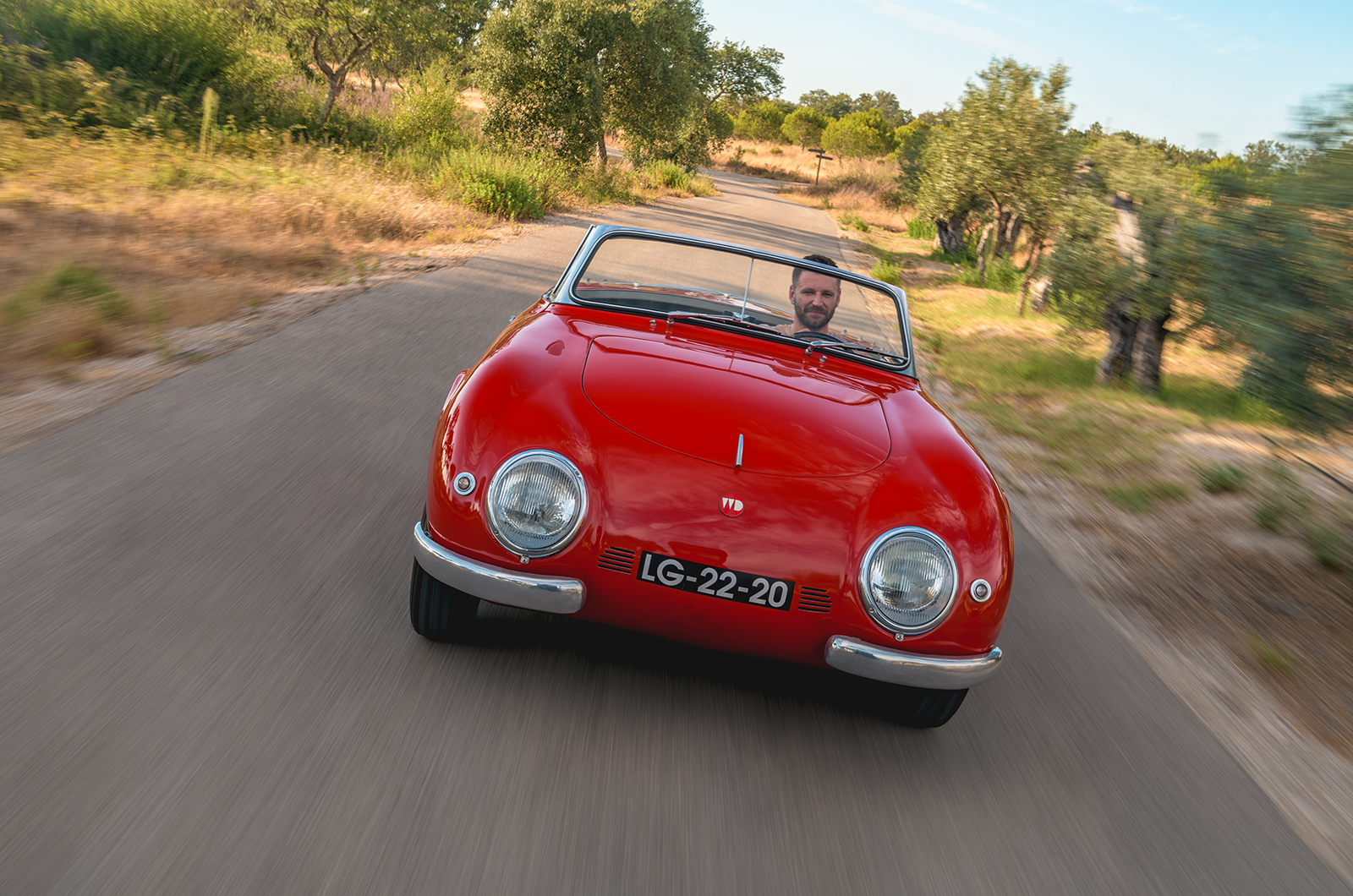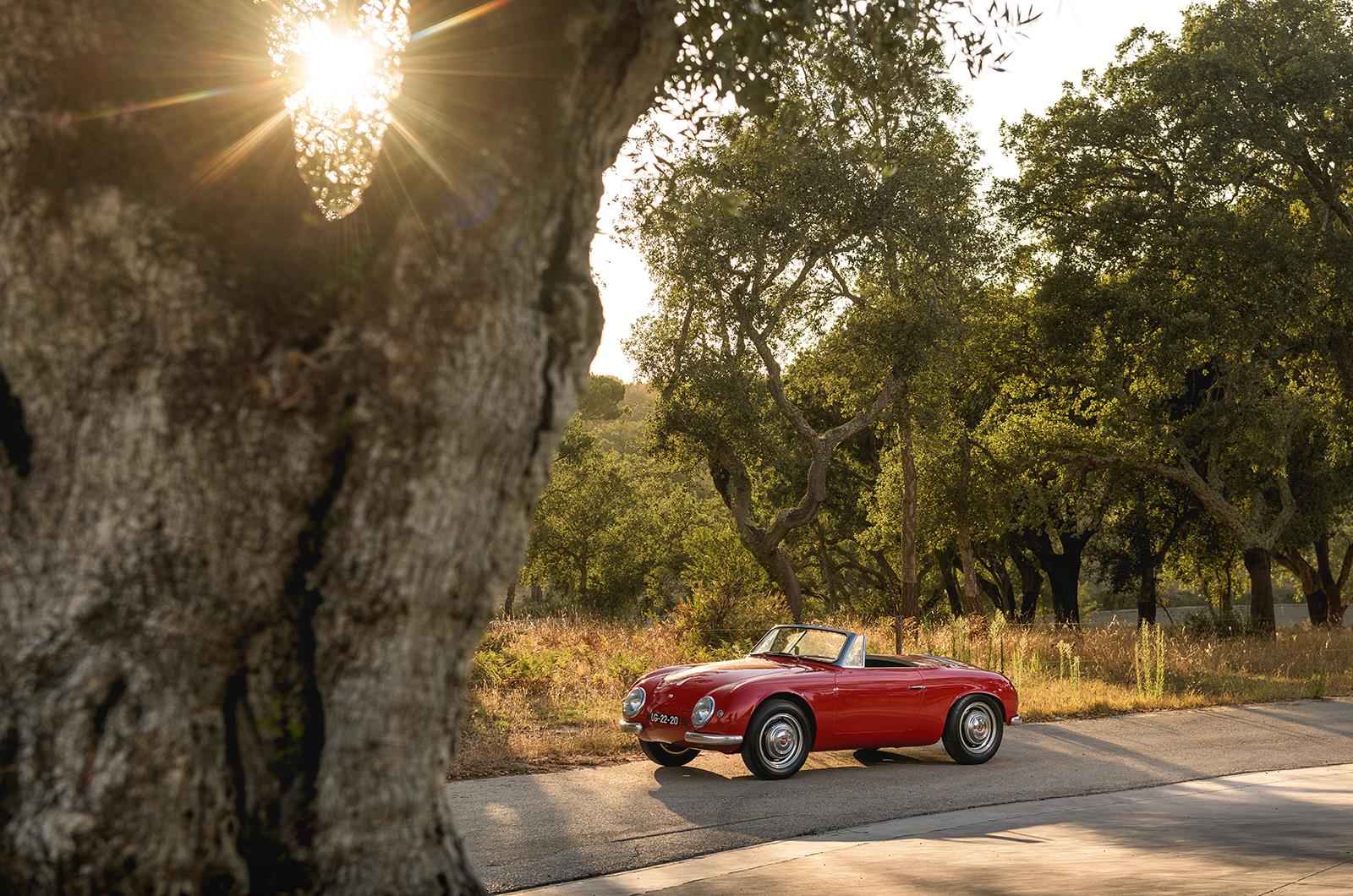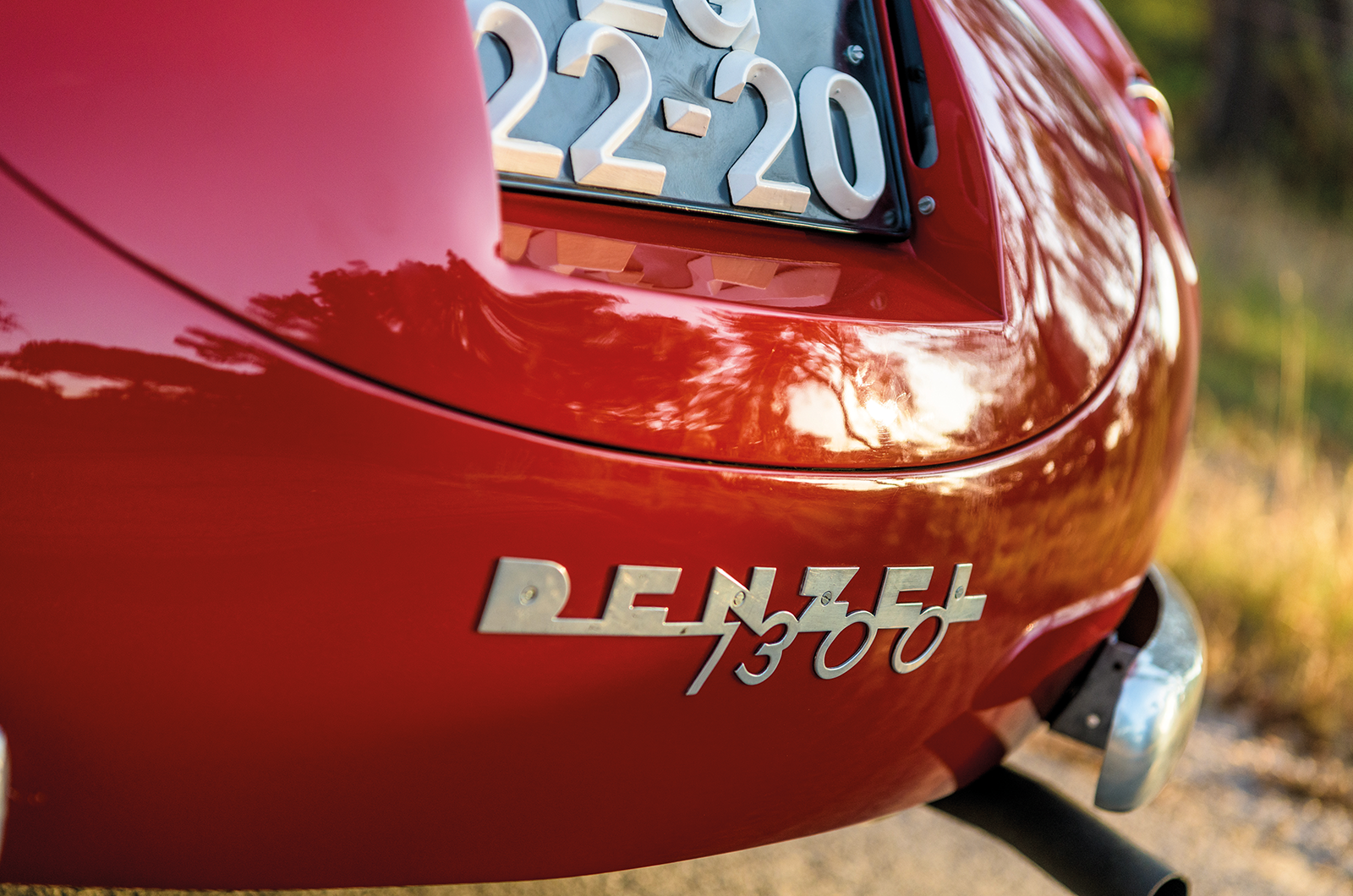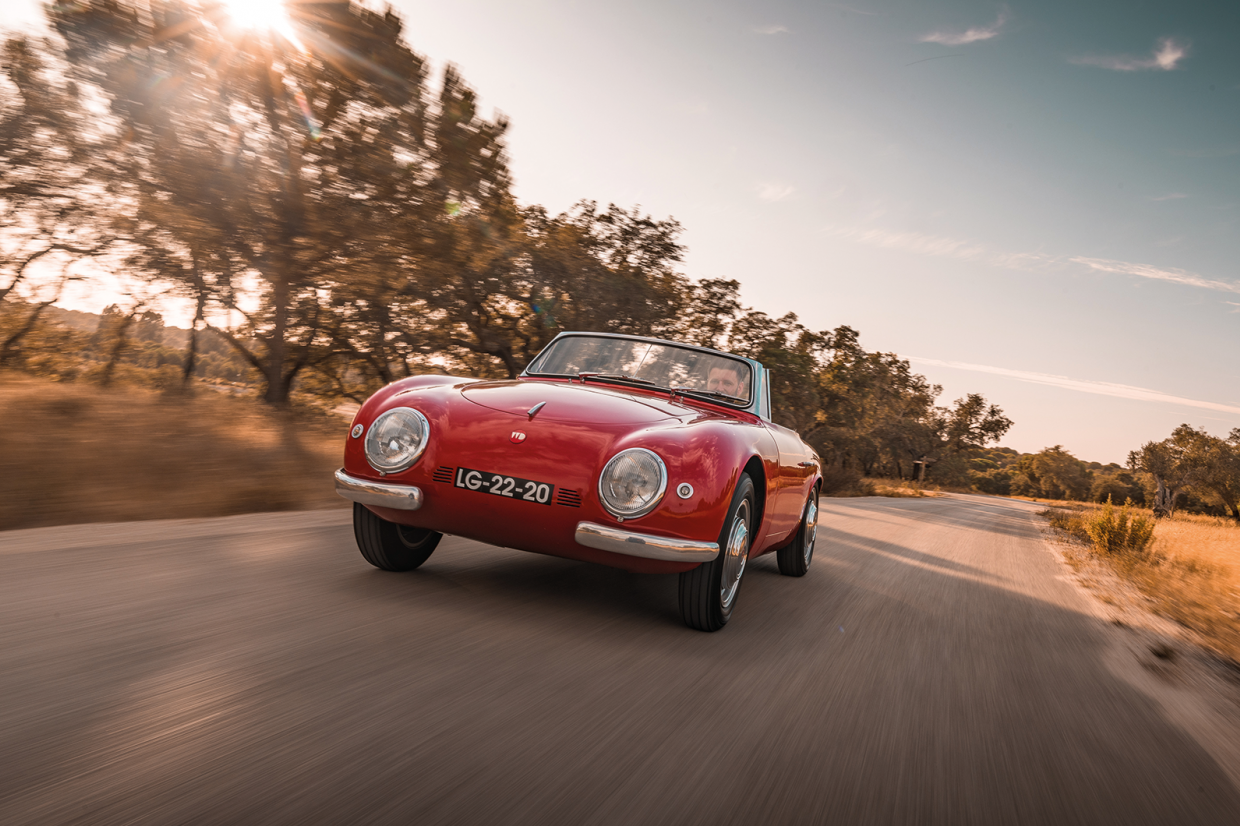
Few marques are so intimately tied with the history and image of Southern California as Porsche.
Just the mention of the name conjures images of Aviator shades and cigarette packs tucked into T-shirt sleeves; a Kodachrome world of sun-drenched race tracks, James Dean and blue jeans.
But, while history remembers the Speedster as a cult icon, an exotic and overlooked Teutonic racer was giving the 356 a run for its money throughout the ’50s, from Santa Barbara and Pomona to the street circuits of Europe.
As Ferry Porsche was beginning construction of his 356 in a scruffy sawmill in Gmünd, an Austrian rival by the name of Wolfgang Denzel was embarking on an automotive journey of his own in Vienna.
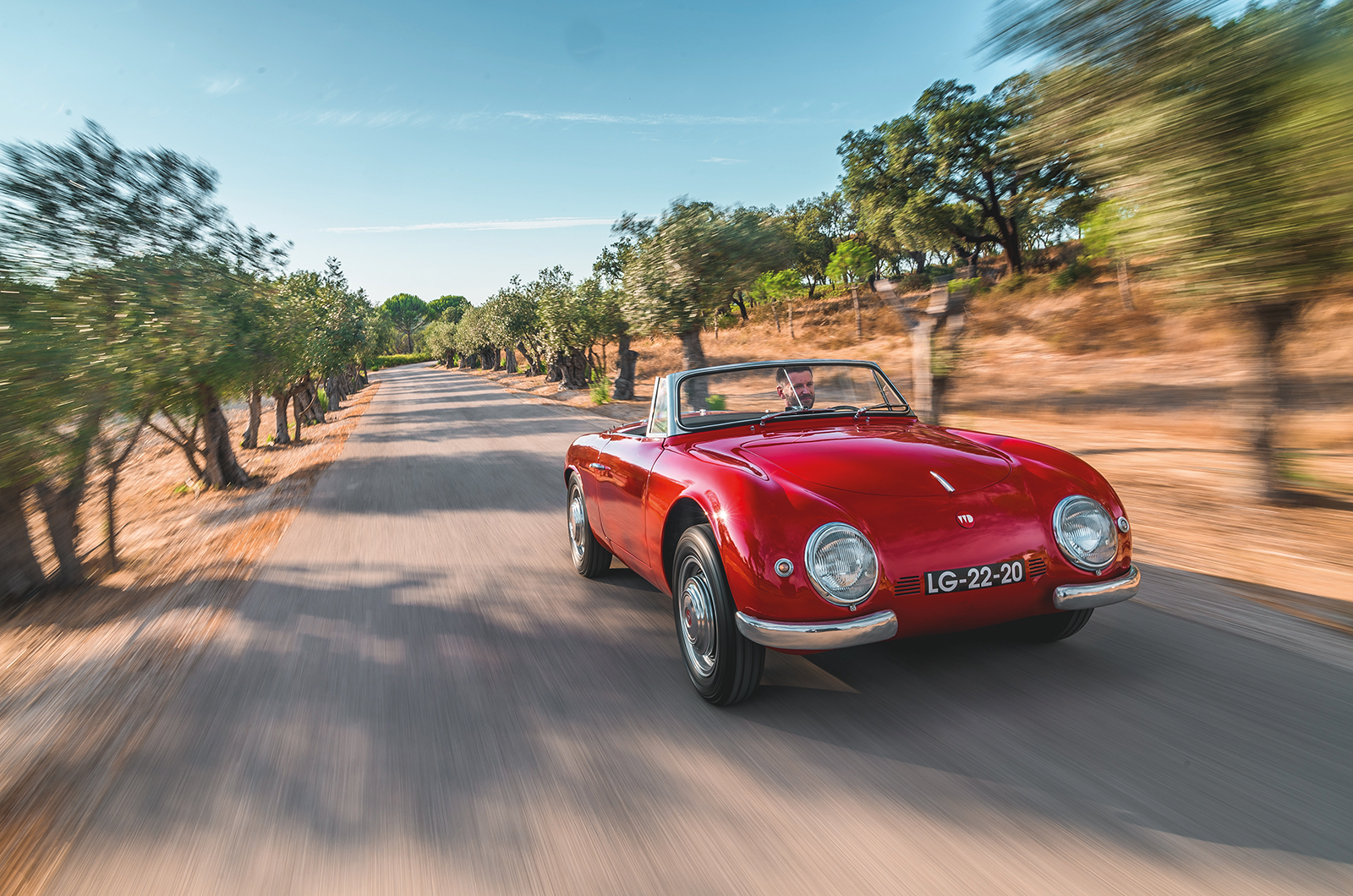
Denzel was a gifted engineer who, like Porsche, saw great potential in the Volkswagen Beetle, and the military Kübelwagen variants that flooded the post-WW2 market.
Denzel began work on a prototype, using the chassis, 1100cc flat-four engine and underpinnings of the People’s Car, but with a lightweight body of his own design constructed from laminated wood and textiles.

